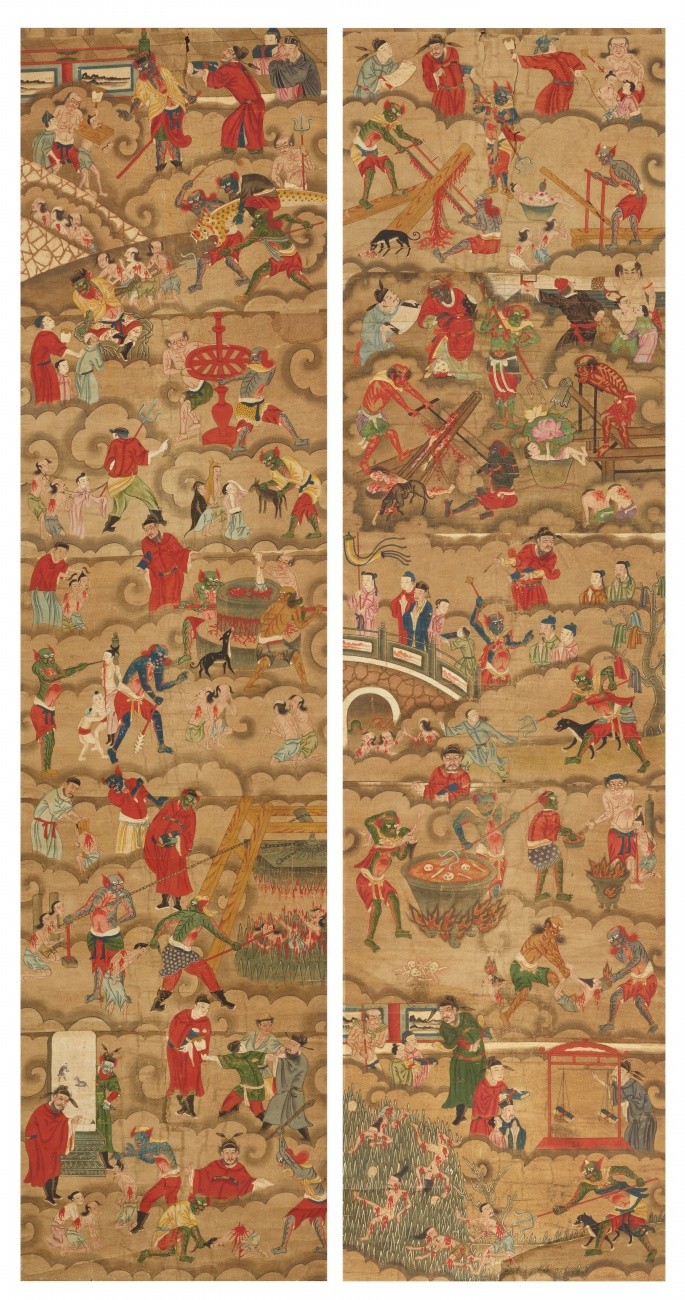Anonymous painter. Qing dynasty (1644–1911)
Two painings of the layers of Chinese hell. Two scrolls. Ink and colours on loose paper. (2)
287 x 74 cm
The concept of Chinese hell (diyu) is based on the Buddhist notion of underworlds (Skrt. Naraka), which was incorporated into Chinese afterlife concepts from Daoism, Chinese mythology, and folk religions.
One of the earliest descriptions of hell is found in a chapter of the Agama sutra, known as early as around 600, "Chang ahan jing" in Chinese. Other Buddhist sutras dealing with the subject of hell include the "Wen diyu jing" (Sutra on Questions about Hell), which mentions 134 hell worlds, and the "Shiba nili jing" (Sutra on the Eighteen Hells), in which the number was simplified to 18 hells.
The place where sins committed during one's lifetime are punished in preparation for their next reincarnation is divided into several levels through which the soul passes, in which the length of stay depends on the severity of the sins. Each hell is administered by a king, while the tortures are carried out by demons.
Shown here, depending on the type of sin, are punishments and tortures from the 18 levels of the underworld including:
The Mountain of Knives, Cauldron Torture, Boiling Liquid Torture, Tortures by Means of Animals, the Chamber of Dismemberment, Chamber of Saw with cutting in half and Sawing, Cutting and Grinding, the pool of Blood, crushing and pounding.
清 十八層地獄圖 (二幅)
設色紙本 無款
来源:德国北威州私人收藏
Provenance
Private collection, North Rhine-Westphalia, Germany










